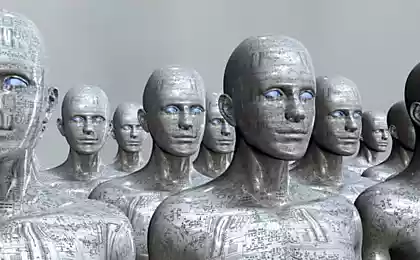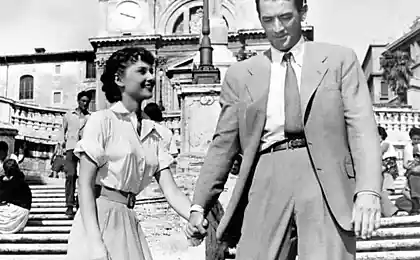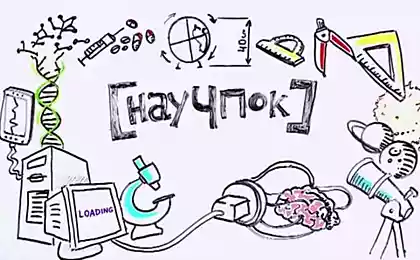809
Michael Gazzaniga on the brain and the nature of consciousness
The realization that the unconscious is able to receive information, store it, compare it to previous experiences and to use, at the time, caused real shock specialists. After all, it means that the brain can do without the involvement of conscious awareness and to make decisions on an unconscious level.
Michael Gazzaniga is Director of the Center for the study of the brain SAGE, University of California at Santa Barbara, former head of the project "Law and neuroscience" of the MacArthur Foundation.
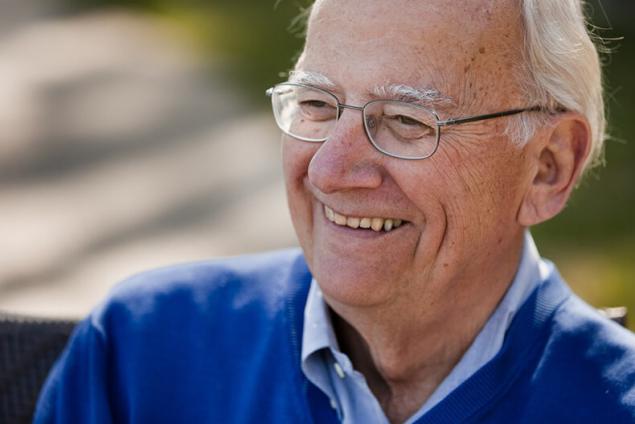
In his book the Social brain (The Social Brain, 1985) it is a concept that could be truly revolutionary. Phenomenon, long studied in clinical hypnotherapy, get in the theory of biological substantiation gazzaniga.
Michael Gazzaniga developed the concept of "modules", which shows how during the functioning of the brain on mood and human behavior can impact information not relevant to his consciousness. Disturbance of the brain at an unconscious level, more than a decade studying hypnotherapy adherents, but today such models to stimulate and attract the attention of a much larger circle of specialists.
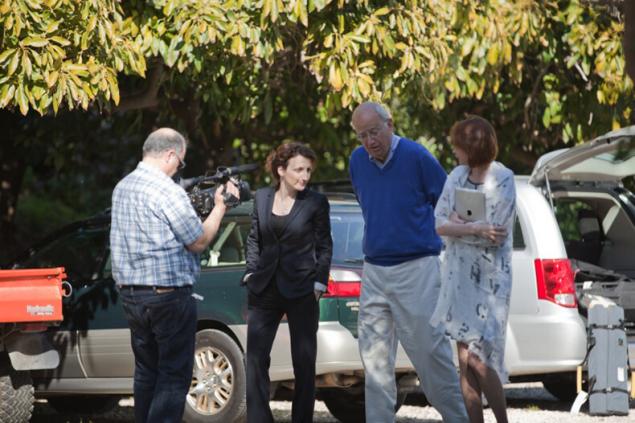
The brain is a complex machine
California, the famous Santa Barbara on the Pacific ocean. Hills, vineyards, fruit trees... In the background of these beauties took place the shooting of the next program. The character of the issue was Michael Gazzaniga, Professor, University of California Santa Barbara, world renowned neuroscientist and one of the world's leading experts in the field of bioethics.
Investigating functional differences of the hemispheres of the brain, he at the time, experimentally demonstrated the unconscious nature of most human actions — and thereby put in front of colleagues and society a provocative question: what is there in Homo sapiens free will? Do we have the biological ability to make choices rationally?
SUBSCRIBE to OUR youtube channel that allows you to watch online, download from YouTube free video about the recovery, the rejuvenation of man. Love for others and ourselves, as the feeling of high vibrations — an important factor
Music of the hemispheres
Almost half a century ago in the journal Scientific American published an article by a young American scientist on a revolutionary study in the physiology of the brain. Working in a team with a neuropsychologist Roger Sperry and neurosurgeon Joseph Bogen, a graduate of Caltech University Michael Gazzaniga tested patients who underwent commissurotomy.
This dissection of neural bridges (Komissar) that connect the two hemispheres of the human brain, including the so-called corpus callosum. This operation was first done by this group of scientists, but at the time it was conducted and in other scientific centers of the USA. The purpose of comissurotomy was to relieve the suffering of patients with severe forms of epilepsy. And it worked, seizures and convulsions had stopped, but nothing more: no changes in behavior and mental abilities of the patients, the doctors were not observed.
That group, under the guidance of Roger Sperry investigated the perception operated more deeply and came to a stunning conclusion. "After the separation of the hemispheres, we actually get two brains, each of which is able to implement complex mental functions", later formulated these first observations of Gazzaniga.
He himself conducted the tests in perception for the left and right fields of view, patients (as you know, each eye has two of them) and later described his delight from the opening: "the Right hemisphere receive information about the picture, but could not give a verbal response. It simply couldn't talk about what you saw!"
This "voice the helplessness of the right hemisphere", the failure to give a verbal report about an event corresponding to the opposite field of view simple things with spoons and toothbrushes – was the fact that the speech center, as it turned out, remained in the separated left hemisphere. Subsequent experiments, however, opened and strengths in the right half of the brain. For example, visual-constructive tasks, it was out of competition and has shown the ability to independent emotional reactions.
Separation of functions is a property only of the human brain, nothing similar was observed even in the higher primates. Today superficial information about this functional asymmetry (or specialization of the lateral) of the brain-known and very far from science people.
We all sometimes amateurish argue that we have no inspiration, because the right hemisphere does not want to work, or "women's logic" associated with the insufficient activity of women of the left hemisphere, etc – the echo of the scientific discoveries of the beginning of the 1960s, Gazzaniga Himself to such a superficial interpretation is negative. "Our idea about the more analytical hemisphere and the more creative the many was understood simplistically," explained Professor Evelina Zakamskaya, presenter and author of "Ideas changing the world".
Ironic smile, he even remembered the famous advertising campaign of the automaker SAAB in the early 1980s.: ""the beauty of the car in the right hemisphere, and the decision to buy it – in the left". I don't like it, to be honest. People think grabbing some information, they can use it in conversation and it relates to science. Something is not right".
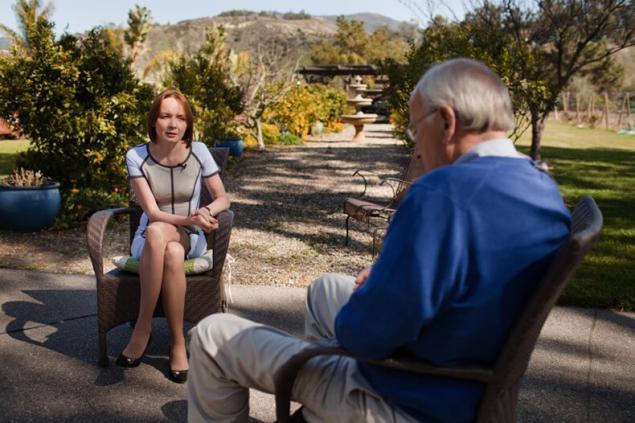
According to Dr. Gazzaniga, some of his colleagues consider profanity a good move. From the point of view of visibility and potential funding is, perhaps, sometimes effective. But he against such PR skeptical.
"As a scientist you feel responsible for the presentation of information is proper, correct way. Scientific knowledge, the view of science and its defense is three completely different areas each with their own difficulties," he explained.
In this case the Professor provides an example to correct the popularization of neuroscience and, in addition to serious work, has published several popular science books about the brain, the nature of consciousness and problems of bioethics. It is considered to be a great storyteller, he has a subtle sense of humor and clear writing style that makes his book of interest to a broad audience. Some of his phrases are worthy of being winged, for example: "the primary work of man throughout life – to become less stupid," or a more serious thought, which he has aphoristically formulated for our program: "Scientists are wrong, and science is always right."
Attention companies, private foundations and government representatives to the problems of neuroscience Michael Gazzaniga attracts quite successfully – of course, not alone. In the production of "Ideas" with his participation included a snippet of a recent speech of Barack Obama, where the President of the United States announces the allocation of $100 million for funding a new national programme in this area. Possible motives of politicians Gazzaniga not interested in: "In a sense, for me there is no difference. I know the main thing: the more attention, money and research, the faster you will solve the problem".
Unfortunately, in the Russian language nor the fundamental works of Michael Gazzaniga (e.g., Cognitive neurosciences is 1995), nor is it the works of different years that are read intellectuals in the world (Mind Matters, The Ethical Brain, Social Mind, etc.) not yet published.
In the University anthologies can only be found a long extract from the work of the early 1970s "the human Split brain", where given an overview of experiments and findings during the first 15 years of his scientific career. Mention the main hypotheses of Gazzaniga made outside of work in group Sperry, in this translated article yet. Significant progress in understanding the functioning of the human "I" and where are his "strong-willed decisions", he was just in the next two decades.
The word interpreter
California – the birthplace of Michael Gazzaniga and his place of work for almost the entire academic career. He grew up in Glendale, a Northern suburb of Los Angeles. His father was a surgeon, and an interest in biology, of course, passed on to son from his parents: his first experiments future neuroscientist spent in the garage.
Later, while studying at Dartmouth College, he took a keen interest in the Sciences of brain and the search for a summer internship addressed a letter to the head of an interesting program. This head and was future Nobel prize winner Roger Sperry of Caltech. So Gazzaniga learned about the unusual patient with a split brain, which – at first glance – keep the unity of consciousness. Being a true scientist, he doubted it.

The idea that the changes still must be, let him have no rest after returning to Dartmouth. As he later recalled in an interview, he wanted to carefully test these Oldtimers, and he wrote another surgeon, also conducted similar operations at another University. But was refused.
Other roads besides back to Caltech, to the novice researcher. Waiting for the end of College, he went there, he returned to the research group of Sperry and had the opportunity to satisfy your scientific curiosity to the fullest, testing all new patients and seeing how there are "two independent spheres of consciousness within the skull".
At the age of 25 years Gazzaniga received his doctorate in psychobiology and a grant for their own research of the brain of animals (his subjects were cats). Then change universities, laboratories, and in the late 1970s, he puts forward and proves already own, independent research idea. It is a hypothesis about the modular nature of the brain, "plurality of minds", in other words, the absence in it of the main control center.
Crucial to this discovery was the seemingly routine experiment with a demonstration of left and right hemispheres of the patient is quite common for this experiment images. Subjects had to detect the relationship between them and predictably completed the task. But Gazzaniga for the first time decided to ask the reasons for the choice ("it took me 25 years to ask the right question"). And was stunned: in the case of the image to the right hemisphere explanation of the test was so exotic and unexpected that the question "Why?" the experimenters have since become the voice regularly.
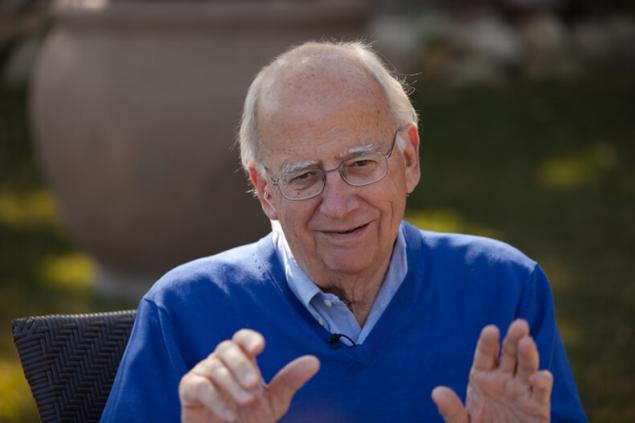
Thus was born the assumption about localization in the left hemisphere of the brain dedicated to "explaining" a module, Gazzaniga called it by the interpreter. "We almost do everything automatically. Primitive mechanisms provide an opportunity to arise reflex, reactions to the environment," the scientist explained in an interview with Evelina Zakamskaya. The interpreter is activated after our right brain unconsciously, gave impulse to action.
This module continuously searches for the "sense" explanations for what is happening, trying to bring order to the chaos touch. And after the fact, based on the available prior information is building for us possible consistent picture, which is displayed on the level of consciousness.
A well-known example of such activities of the interpreter — effect of bringing together people in extreme conditions who are actively using fans light Dating. For example, if a girl experimenter tries to establish contact with a man in circumstances of conditional risk (e.g., shaky bridge), feedback in the form of a phone call is much more often than in conditions where subjects are in no danger. The left hemisphere is "experimental" males interpreterpath emerging physiological responses are often not even conscious – not in fear, but with sexual interest. This version is for consciousness more acceptable.
The principle of modularity is not limited to the presence of the interpreter. Any mental function in ordinary human beings is based on structures of both hemispheres. Experiments in subsequent years have shown that the brain is a distributed, dynamic system with many processing nodes.
For the Russian audience Gazzaniga explained: "Every action of yours is a set of parallel processes at different points of the brain. It's many systems working in unison". In quantitative terms we are talking about huge quantities: "We are trying to determine how to interact with each other 89 billion neurons".
Today Professor Gazzaniga is one of the founders of a trend in the neurosciences, the cognitive neurosciences, born at the crossroads of psychology and biology. Of course, this happened not once, but decades of routine experiments, interdisciplinary research, publication of the specialized magazine and the work it conducted at the Institute of neuroscience at Dartmouth and the Center for cognitive neuroscience at the University of California, Davis.
Not without intuition. "If you're into neuroscience for 50 years, you begin to feel the problem to feel like it all might work," admitted the Professor. However, immediately brought under the rational subject line: "You see the interaction mechanisms that truly complex machine which determines our behavior."

Ethical threats
From the perfect Professor Gazzaniga discoveries can be made completely deterministic conclusion that free will is only an illusion. His personal reasoning as neurophilosophy something like this: the brain is material and obeys the laws of the material world, and consciousness is derivative; about any "values" as the cause of human behavior we are not talking, it's just explaining that the brain gives varying automatically the chosen strategy.
His view on the nature of universal human ethics Gazzaniga outlined in the work of The Ethical Brain (2005). From his point of view, embedded in our consciousness "moral compass" comes from empathy. Viewing of images, in which human beings experience pain, stimulates the corresponding parts of our own brain.
Due to this we are able to feel other people's suffering in the literal sense, and the interpreter gives the resulting effects of a rational explanation. In different cultures it is designed differently, but the essence is the same: murder prevents the brain itself. Predictable that on the direct question of Evelina Zakamskaya on the possibility of the presence in this picture of the world of God Michael Gazzaniga laughed and said flatly: "No." (And already behind the scenes added: "I already live in Paradise.")

From the predetermination of our consciousness biology, logically, the question: isn't it time for society to reconsider the principle of personal responsibility for their actions? Some neuroscientists and neuropsychologists today answer this question in the affirmative, but Gazzaniga himself is considered a "soft" determinist. "We need to separate the concepts of mind, consciousness and personality, – he writes. — The brain is deterministic, and personality free." The controversy he elegantly removes arguments to the effect that the responsibility is a phenomenon of a different order, the product of social relations, social relations and human being a complex system phenomenon, subject to different laws.
However, in the last ten years, lawyers in the us courts are increasingly trying to shift the boundary of personal responsibility and show results of brain scans as mitigating circumstances. Professor Gazzaniga explained to us why he refers to this practice: "Suppose that criminal behavior depends on the activity of certain areas of the brain.
But can we consider such a change an excuse? Because most people with the same lesion in the same circumstances don't commit crimes". On the other hand, there is the problem of so-called "criminal brain." Scientists have identified parts of the cortex that are excited by the suppression of human impulses-to-action. However, the level of excitation is an individual norm. "A person has a defect, he has committed a crime, but it is impossible to generalize that all people with brain damage tend".
Michael Gazzaniga does not exclude that sooner or later, neuroscience will have an impact on the norms of justice, but there are no guarantees that the companies that would be good. And this is not the only ethical barrier, which will be questioned in the twenty-first century, Should we at any cost to aspire to high life expectancy, regardless of the condition of the brain? Is it permissible genetic and pharmacological intervention with the aim of raising the level of intelligence? Up to what point in embryo development is considered acceptable manipulations with embryonic stem cells?
Derek Sivers: Why you can't tell anyone about his plans
Elon Musk: We live in a huge virtual game
However, some fears of our crew Dr. Gazzaniga dispelled. So, the script of the movie "the Matrix" and the creation of artificial intelligence in the foreseeable future on the agenda are not: "If you talk about it as copies of the human brain, which would be described in the work of each neuron, that is, of course, fantastic."
Mind reading and influence of using implantable brain chips in the near future we also will not get any. "The only way to change people's thoughts – communication. Another way to do it is impossible and will not work in the near future, and maybe even never."published
Prepared By: Olga Platitsyna
Put LIKES and share with your FRIENDS!
www.youtube.com/channel/UCXd71u0w04qcwk32c8kY2BA/videos
Subscribe — www.facebook.com//
Source: scientificrussia.ru/articles/michael-gazzaniga
Michael Gazzaniga is Director of the Center for the study of the brain SAGE, University of California at Santa Barbara, former head of the project "Law and neuroscience" of the MacArthur Foundation.

In his book the Social brain (The Social Brain, 1985) it is a concept that could be truly revolutionary. Phenomenon, long studied in clinical hypnotherapy, get in the theory of biological substantiation gazzaniga.
Michael Gazzaniga developed the concept of "modules", which shows how during the functioning of the brain on mood and human behavior can impact information not relevant to his consciousness. Disturbance of the brain at an unconscious level, more than a decade studying hypnotherapy adherents, but today such models to stimulate and attract the attention of a much larger circle of specialists.

The brain is a complex machine
California, the famous Santa Barbara on the Pacific ocean. Hills, vineyards, fruit trees... In the background of these beauties took place the shooting of the next program. The character of the issue was Michael Gazzaniga, Professor, University of California Santa Barbara, world renowned neuroscientist and one of the world's leading experts in the field of bioethics.
Investigating functional differences of the hemispheres of the brain, he at the time, experimentally demonstrated the unconscious nature of most human actions — and thereby put in front of colleagues and society a provocative question: what is there in Homo sapiens free will? Do we have the biological ability to make choices rationally?
SUBSCRIBE to OUR youtube channel that allows you to watch online, download from YouTube free video about the recovery, the rejuvenation of man. Love for others and ourselves, as the feeling of high vibrations — an important factor
Music of the hemispheres
Almost half a century ago in the journal Scientific American published an article by a young American scientist on a revolutionary study in the physiology of the brain. Working in a team with a neuropsychologist Roger Sperry and neurosurgeon Joseph Bogen, a graduate of Caltech University Michael Gazzaniga tested patients who underwent commissurotomy.
This dissection of neural bridges (Komissar) that connect the two hemispheres of the human brain, including the so-called corpus callosum. This operation was first done by this group of scientists, but at the time it was conducted and in other scientific centers of the USA. The purpose of comissurotomy was to relieve the suffering of patients with severe forms of epilepsy. And it worked, seizures and convulsions had stopped, but nothing more: no changes in behavior and mental abilities of the patients, the doctors were not observed.
That group, under the guidance of Roger Sperry investigated the perception operated more deeply and came to a stunning conclusion. "After the separation of the hemispheres, we actually get two brains, each of which is able to implement complex mental functions", later formulated these first observations of Gazzaniga.
He himself conducted the tests in perception for the left and right fields of view, patients (as you know, each eye has two of them) and later described his delight from the opening: "the Right hemisphere receive information about the picture, but could not give a verbal response. It simply couldn't talk about what you saw!"
This "voice the helplessness of the right hemisphere", the failure to give a verbal report about an event corresponding to the opposite field of view simple things with spoons and toothbrushes – was the fact that the speech center, as it turned out, remained in the separated left hemisphere. Subsequent experiments, however, opened and strengths in the right half of the brain. For example, visual-constructive tasks, it was out of competition and has shown the ability to independent emotional reactions.
Separation of functions is a property only of the human brain, nothing similar was observed even in the higher primates. Today superficial information about this functional asymmetry (or specialization of the lateral) of the brain-known and very far from science people.
We all sometimes amateurish argue that we have no inspiration, because the right hemisphere does not want to work, or "women's logic" associated with the insufficient activity of women of the left hemisphere, etc – the echo of the scientific discoveries of the beginning of the 1960s, Gazzaniga Himself to such a superficial interpretation is negative. "Our idea about the more analytical hemisphere and the more creative the many was understood simplistically," explained Professor Evelina Zakamskaya, presenter and author of "Ideas changing the world".
Ironic smile, he even remembered the famous advertising campaign of the automaker SAAB in the early 1980s.: ""the beauty of the car in the right hemisphere, and the decision to buy it – in the left". I don't like it, to be honest. People think grabbing some information, they can use it in conversation and it relates to science. Something is not right".

According to Dr. Gazzaniga, some of his colleagues consider profanity a good move. From the point of view of visibility and potential funding is, perhaps, sometimes effective. But he against such PR skeptical.
"As a scientist you feel responsible for the presentation of information is proper, correct way. Scientific knowledge, the view of science and its defense is three completely different areas each with their own difficulties," he explained.
In this case the Professor provides an example to correct the popularization of neuroscience and, in addition to serious work, has published several popular science books about the brain, the nature of consciousness and problems of bioethics. It is considered to be a great storyteller, he has a subtle sense of humor and clear writing style that makes his book of interest to a broad audience. Some of his phrases are worthy of being winged, for example: "the primary work of man throughout life – to become less stupid," or a more serious thought, which he has aphoristically formulated for our program: "Scientists are wrong, and science is always right."
Attention companies, private foundations and government representatives to the problems of neuroscience Michael Gazzaniga attracts quite successfully – of course, not alone. In the production of "Ideas" with his participation included a snippet of a recent speech of Barack Obama, where the President of the United States announces the allocation of $100 million for funding a new national programme in this area. Possible motives of politicians Gazzaniga not interested in: "In a sense, for me there is no difference. I know the main thing: the more attention, money and research, the faster you will solve the problem".
Unfortunately, in the Russian language nor the fundamental works of Michael Gazzaniga (e.g., Cognitive neurosciences is 1995), nor is it the works of different years that are read intellectuals in the world (Mind Matters, The Ethical Brain, Social Mind, etc.) not yet published.
In the University anthologies can only be found a long extract from the work of the early 1970s "the human Split brain", where given an overview of experiments and findings during the first 15 years of his scientific career. Mention the main hypotheses of Gazzaniga made outside of work in group Sperry, in this translated article yet. Significant progress in understanding the functioning of the human "I" and where are his "strong-willed decisions", he was just in the next two decades.
The word interpreter
California – the birthplace of Michael Gazzaniga and his place of work for almost the entire academic career. He grew up in Glendale, a Northern suburb of Los Angeles. His father was a surgeon, and an interest in biology, of course, passed on to son from his parents: his first experiments future neuroscientist spent in the garage.
Later, while studying at Dartmouth College, he took a keen interest in the Sciences of brain and the search for a summer internship addressed a letter to the head of an interesting program. This head and was future Nobel prize winner Roger Sperry of Caltech. So Gazzaniga learned about the unusual patient with a split brain, which – at first glance – keep the unity of consciousness. Being a true scientist, he doubted it.

The idea that the changes still must be, let him have no rest after returning to Dartmouth. As he later recalled in an interview, he wanted to carefully test these Oldtimers, and he wrote another surgeon, also conducted similar operations at another University. But was refused.
Other roads besides back to Caltech, to the novice researcher. Waiting for the end of College, he went there, he returned to the research group of Sperry and had the opportunity to satisfy your scientific curiosity to the fullest, testing all new patients and seeing how there are "two independent spheres of consciousness within the skull".
At the age of 25 years Gazzaniga received his doctorate in psychobiology and a grant for their own research of the brain of animals (his subjects were cats). Then change universities, laboratories, and in the late 1970s, he puts forward and proves already own, independent research idea. It is a hypothesis about the modular nature of the brain, "plurality of minds", in other words, the absence in it of the main control center.
Crucial to this discovery was the seemingly routine experiment with a demonstration of left and right hemispheres of the patient is quite common for this experiment images. Subjects had to detect the relationship between them and predictably completed the task. But Gazzaniga for the first time decided to ask the reasons for the choice ("it took me 25 years to ask the right question"). And was stunned: in the case of the image to the right hemisphere explanation of the test was so exotic and unexpected that the question "Why?" the experimenters have since become the voice regularly.

Thus was born the assumption about localization in the left hemisphere of the brain dedicated to "explaining" a module, Gazzaniga called it by the interpreter. "We almost do everything automatically. Primitive mechanisms provide an opportunity to arise reflex, reactions to the environment," the scientist explained in an interview with Evelina Zakamskaya. The interpreter is activated after our right brain unconsciously, gave impulse to action.
This module continuously searches for the "sense" explanations for what is happening, trying to bring order to the chaos touch. And after the fact, based on the available prior information is building for us possible consistent picture, which is displayed on the level of consciousness.
A well-known example of such activities of the interpreter — effect of bringing together people in extreme conditions who are actively using fans light Dating. For example, if a girl experimenter tries to establish contact with a man in circumstances of conditional risk (e.g., shaky bridge), feedback in the form of a phone call is much more often than in conditions where subjects are in no danger. The left hemisphere is "experimental" males interpreterpath emerging physiological responses are often not even conscious – not in fear, but with sexual interest. This version is for consciousness more acceptable.
The principle of modularity is not limited to the presence of the interpreter. Any mental function in ordinary human beings is based on structures of both hemispheres. Experiments in subsequent years have shown that the brain is a distributed, dynamic system with many processing nodes.
For the Russian audience Gazzaniga explained: "Every action of yours is a set of parallel processes at different points of the brain. It's many systems working in unison". In quantitative terms we are talking about huge quantities: "We are trying to determine how to interact with each other 89 billion neurons".
Today Professor Gazzaniga is one of the founders of a trend in the neurosciences, the cognitive neurosciences, born at the crossroads of psychology and biology. Of course, this happened not once, but decades of routine experiments, interdisciplinary research, publication of the specialized magazine and the work it conducted at the Institute of neuroscience at Dartmouth and the Center for cognitive neuroscience at the University of California, Davis.
Not without intuition. "If you're into neuroscience for 50 years, you begin to feel the problem to feel like it all might work," admitted the Professor. However, immediately brought under the rational subject line: "You see the interaction mechanisms that truly complex machine which determines our behavior."

Ethical threats
From the perfect Professor Gazzaniga discoveries can be made completely deterministic conclusion that free will is only an illusion. His personal reasoning as neurophilosophy something like this: the brain is material and obeys the laws of the material world, and consciousness is derivative; about any "values" as the cause of human behavior we are not talking, it's just explaining that the brain gives varying automatically the chosen strategy.
His view on the nature of universal human ethics Gazzaniga outlined in the work of The Ethical Brain (2005). From his point of view, embedded in our consciousness "moral compass" comes from empathy. Viewing of images, in which human beings experience pain, stimulates the corresponding parts of our own brain.
Due to this we are able to feel other people's suffering in the literal sense, and the interpreter gives the resulting effects of a rational explanation. In different cultures it is designed differently, but the essence is the same: murder prevents the brain itself. Predictable that on the direct question of Evelina Zakamskaya on the possibility of the presence in this picture of the world of God Michael Gazzaniga laughed and said flatly: "No." (And already behind the scenes added: "I already live in Paradise.")

From the predetermination of our consciousness biology, logically, the question: isn't it time for society to reconsider the principle of personal responsibility for their actions? Some neuroscientists and neuropsychologists today answer this question in the affirmative, but Gazzaniga himself is considered a "soft" determinist. "We need to separate the concepts of mind, consciousness and personality, – he writes. — The brain is deterministic, and personality free." The controversy he elegantly removes arguments to the effect that the responsibility is a phenomenon of a different order, the product of social relations, social relations and human being a complex system phenomenon, subject to different laws.
However, in the last ten years, lawyers in the us courts are increasingly trying to shift the boundary of personal responsibility and show results of brain scans as mitigating circumstances. Professor Gazzaniga explained to us why he refers to this practice: "Suppose that criminal behavior depends on the activity of certain areas of the brain.
But can we consider such a change an excuse? Because most people with the same lesion in the same circumstances don't commit crimes". On the other hand, there is the problem of so-called "criminal brain." Scientists have identified parts of the cortex that are excited by the suppression of human impulses-to-action. However, the level of excitation is an individual norm. "A person has a defect, he has committed a crime, but it is impossible to generalize that all people with brain damage tend".
Michael Gazzaniga does not exclude that sooner or later, neuroscience will have an impact on the norms of justice, but there are no guarantees that the companies that would be good. And this is not the only ethical barrier, which will be questioned in the twenty-first century, Should we at any cost to aspire to high life expectancy, regardless of the condition of the brain? Is it permissible genetic and pharmacological intervention with the aim of raising the level of intelligence? Up to what point in embryo development is considered acceptable manipulations with embryonic stem cells?
Derek Sivers: Why you can't tell anyone about his plans
Elon Musk: We live in a huge virtual game
However, some fears of our crew Dr. Gazzaniga dispelled. So, the script of the movie "the Matrix" and the creation of artificial intelligence in the foreseeable future on the agenda are not: "If you talk about it as copies of the human brain, which would be described in the work of each neuron, that is, of course, fantastic."
Mind reading and influence of using implantable brain chips in the near future we also will not get any. "The only way to change people's thoughts – communication. Another way to do it is impossible and will not work in the near future, and maybe even never."published
Prepared By: Olga Platitsyna
Put LIKES and share with your FRIENDS!
www.youtube.com/channel/UCXd71u0w04qcwk32c8kY2BA/videos
Subscribe — www.facebook.com//
Source: scientificrussia.ru/articles/michael-gazzaniga
TOP 9 books that will help with the Blues
Vadim Zeland: as your negative attitude can ruin your life








